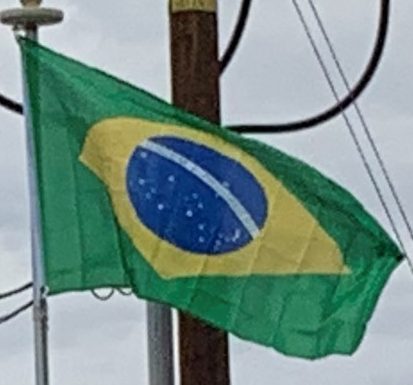The green field and the yellow rhombus from the previous imperial flag, though slightly modified in hue and shape, were preserved — the green represented the House of Braganza of Pedro I, the first Emperor of Brazil, while the yellow represented the House of Habsburg of his wife, Empress Maria Leopoldina. A blue circle with white five-pointed stars replaced the arms of the Empire of Brazil — its position in the flag reflects the sky over the city of Rio de Janeiro on November 15, 1889. The motto Ordem e Progresso is inspired by Auguste Comte’s motto of positivism: “L’amour pour principe et l’ordre pour base; le progrès pour but” (“Love as a principle and order as the basis; progress as the goal”).
Each star corresponds to a Brazilian Federative Unit and, according to Brazilian Law, the flag must be updated in case of creation or extinction of a state. At the time the flag was first adopted in 1889, it held 21 stars. Then it received one more star in 1960 (representing the city-state of Guanabara), then another in 1968 (representing Acre), and finally four more stars in 1992 (representing Amapá, Roraima, Rondônia and Tocantins), totalling 27 stars in its current version.
A list of constellations and stars on the flag:
1. Procyon (α Canis Minoris).
2. Canis Major: five stars, the largest depicting Sirius.
3. Canopus (α Carinae).
4. Spica (α Virginis).
5. Hydra: two stars, the largest depicting Alphard.
6. Crux Australis: five stars, the largest depicting Alpha Crucis.
7. Sigma Octantis (σ Octantis, south pole star).
8. Triangulum Australe: three stars of similar size.
9. Scorpius: eight stars, the largest depicting Antares.
Brazil has had a series of flags representing both the Empire and the Republic, along with various versions of the current flag, all of which can be viewed elsewhere.
